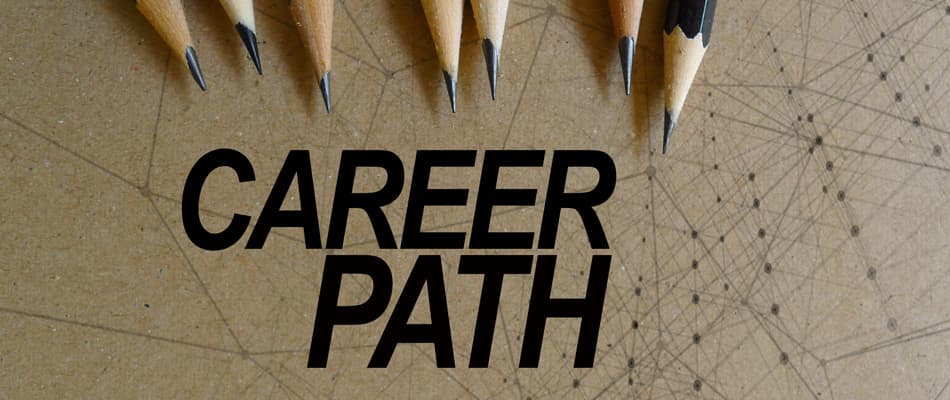What language do full-stack developers use?
The full stack web development process requires versatile developers who are capable of handling both front-end and back-end tasks. These developers must have the superpower to create completely reliable web applications from scratch. As a result, they must be proficient in a wide range of programming languages to play different roles in the development process and build robust and scalable software applications.
With the help of the right full stack development course, they can learn all the vital programming languages for the software development process. So, if you want to pursue a career in full stack development and are looking to handle both the front-end and back-end aspects of web development, you are on the right track. You can continue to read our article to gain insights into what programming languages help full stack developers to handle this web development process. Let’s see.
What is Full Stack Development?
Full Stack Development is a process that involves a developer or a development team designing, building, and maintaining a software application throughout its engineering stages. Here, the developers must have the necessary skills to create a web application’s front-end and back-end components.
That means the developers must develop applications from start to finish without any hiccups. They must merge front-end and back-end development in a cohesive way within a single codebase. But what exactly is front-end and back-end development? The front-end development deals with how a website or app looks and how users interact with it, while back-end development focuses on the behind-the-scenes code that makes everything work smoothly.
As a result, for full stack development, the developers must be proficient in various programming languages, frameworks, and technologies to independently design, develop, and deploy software solutions, bridging the gap between front-end and back-end development.
Top Front-End Programming Languages You Should Know
The front-end part of full stack development, known as the presentation layer, covers everything available to the user. In other words, it deals with user interface of the application that is accessible to the users. So, now let’s explore the core front-end programming languages:
-
HTML:
HTML is a standard markup language essential for full stack web development, as it creates the layout and information on web pages. Hence, full-stack developers use HTML to build the fundamental components of a webpage, such as headers, text blocks, pictures, and hyperlinks.
-
CSS:
CSS is a stylesheet language that enhances the appearance and layout of web pages by incorporating design elements. Full stack developers use CSS to manage the design elements such as layout, typography, colors, and overall visual appeal of their applications, creating a smooth and uniform user experience on various devices and screen sizes.
-
JavaScript:
JavaScript is essential for creating dynamic and interactive web experiences in front-end development. Full stack developers rely on JavaScript to add features to web pages, manage user interactions, handle asynchronous requests, and design responsive layouts. JavaScript frameworks such as React.js, Angular, and Vue.js also improve JavaScript’s abilities and simplify the full stack web development.
Top Back-End Programming Languages You Should Know
Back-end, also known as the logic layer, coordinates the exchange of information between the front end and the server to enable the seamless running of a webpage. Besides, this layer in full stack development allows an application to communicate with the main server. Hence, a full stack developer must possess knowledge and skills in the following programming languages:
-
Python:
Python is a widely used programming language for back-end development because of its simplicity, versatility, and extensive ecosystem. Full-stack developers use Python’s powerful libraries like Django and Flask to quickly build web applications.
-
Java:
Java is one of the oldest and widely used programming language that is platform independent and has strong performance. It offers multiple features to help full stack developer to build enterprise applications, mobile development, and web development. As a result, this language is highly preferred by developers for creating scalable and dependable software solutions.
-
Ruby:
Ruby is well-known for its stylish syntax and user-friendly environment for full stack web development. It has frameworks like Rails used by developers for quickly building web applications. Today, almost all full-stack developers employ Rails since it simplifies the development process and allows developers to concentrate on creating features rather than repetitive code.
Core Database Languages You Should Know
A Database management system is the central data part of the application that stores data and looks after processes like extraction, creation, manipulation, or deletion of the data. Hence, for seamless database management, the full stack developer must require skills and knowledge of domain-specific query languages. Let’s explore the core database languages:
-
SQL:
SQL is the standard language to work with relational databases like MySQL, PostgreSQL, and SQLite. Therefore, it is crucial for full-stack developers to be proficient in SQL as it allows them to carry out a range of tasks such as retrieving data, adding new entries, modifying information, and organising database layouts effectively. Besides, mastering SQL is key to creating efficient database systems, refining search processes, and upholding data reliability.
-
NoSQL:
Full-stack developers often use NoSQL databases like MongoDB and Cassandra alongside relational databases. NoSQL databases provide flexibility, scalability, and strong performance, making them ideal for managing large amounts of unstructured or semi-structured data. Hence, full-stack developers rely on NoSQL databases to store various data types, facilitate agile development processes, and expand horizontally to accommodate increasing needs.
Understanding and gaining hands-on experience in these languages helps professionals to succeed in the full stack development field. It allows them to build responsive and stable software applications that align with the user’s needs and requirements. So, enrol in the best course for full stack development and acquire the necessary skills now!
Conclusion
Full-stack developers use a variety of programming languages to handle the challenges of full stack web development. They work on creating user interfaces and building backend systems using different robust languages and frameworks. Besides, they play a key role in combining frontend and backend development in one codebase to enhance user experience and functionality, resulting in cohesive and dependable software solutions.
Those aiming to become full-stack developers can greatly improve their skills by taking comprehensive courses that include fundamental programming languages and development frameworks. By learning multiple languages for front-end, back-end, and databases, full-stack developers can create cutting-edge web applications that cater to the changing demands of users and businesses. Looking to enrol in the best full stack web development certificate? Digital Regenesys is here for you. You can take our Full Stack Web and Software Development Course to gain hands-on experience in creating scalable applications. Join Now!
FAQs on What language do full-stack developers use?
Q1) What are the benefits of becoming a full-stack developer?
Becoming a full-stack developer comes with a range of advantages. This includes the flexibility to work on tasks for both the front end and back end, the capacity to develop comprehensive solutions on your own, and a deeper comprehension of the software development process.
Q2) How can I improve my skills in full-stack development?
You can improve your skills in full stack development by enroling in thorough courses that delve into key programming languages, frameworks, and technologies. From ed-tech platforms like Digital Regenesys, you can engage in project-building exercises and teamwork with fellow developers to acquire practical, real-world experience.
Q3) Is it necessary to be proficient in both frontend and backend development to become a full-stack developer?
Absolutely, full-stack developers need to be skilled in both frontend and backend development. They must have the ability to design user interfaces and incorporate server-side functionality in order to develop fully functional web applications.
Q4) What programming languages are essential for full-stack development?
When it comes to full-stack development, some key programming languages to know include HTML, CSS, JavaScript, Python, Java, and Ruby. These languages play a vital role in creating user interfaces, backend systems, and managing databases.
Q5) What are the career prospects for full-stack developers?
There is a growing need for full-stack developers in a variety of industries because they have the skills to manage different parts of software development. They can work as web developers, software engineers, team leaders, or even create their own businesses as entrepreneurs.












